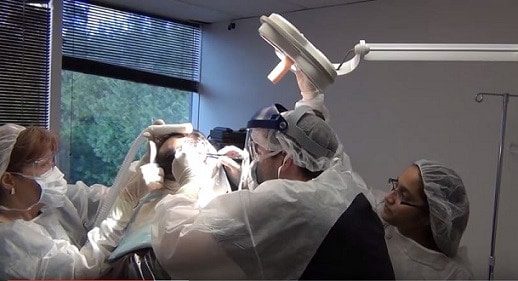Can a patient have a hair transplant if he/she has Lichen Planopilaris (LPP)?
Recently, a consulting patient asked me this exact question on our forums. So can a patient with “LPP” have a hair transplant? More than that, what even is “LPP” and what do other patients need to know about it?
Lichen Planopilaris, or LPP, is a type of scarring alopecia or scarring hair loss. Scarring alopecia is just a medical term for scalp inflammation that turns into scar and causes permanent hair loss.
LPP, in particular, is a type of “immune-mediated” or “auto-immune” hair loss. This means that the body incorrectly recognizes its own hair follicles as “foreign” and attacks them. The immune systems attacks the follicles through an inflammatory response, and this is what turns into the permanent scarring and causes the hair loss.
So, can this be treated with a transplant?
Unfortunately, LPP can be unstable and goes through “active” and “passive” periods. When the LPP is “passive” the hair loss stops and many patients believe the bald patches can now be filled in with transplants. The problem, however, is that the condition may be “active” again after a short period. If new follicles are transplanted from the donor region into the bald patches (through a Follicular Unit Transplant, Follicular Unit Extraction, or modified Follicular Unit Excision (mFUE) procedure), they will be attacked just like the native follicles and fall out.
Now, there are different immune-related treatments (with varying degrees of success) aimed at calming the immune system and stopping the LPP. Sometimes, the LPP is even said to have “burned out” and is in a permanently passive state. However, stressors such as surgery or newly transplanted follicles into previously active LPP areas may cause the condition to “wake up” and attack again.
So what does this mean for patients with LPP who want a hair transplant?
Any patient with a diagnosis of LPP considering hair transplant surgery needs to do two things:
1) Work closely with their dermatology/immunology team to ensure that their LPP is permanently passive or “burned out” and all medications are managing the condition correctly; the patients dermatology/immunology team must believe a transplant is appropriate before moving forward.
2) Consult – in person – with an experienced hair restoration physician who can evaluate the scalp and make sure the scarring alopecia appears passive, the donor is adequate, and the skin in the bald patches has adequate blood supply and good characteristics and will accept the grafts.
To read the entire reply, see the following forum post: Hair Transplant for Scarring Alopecia (LPP)?
Dr. Blake M Bloxham
Hair Restoration Physician
Feller & Bloxham Medical, PC











